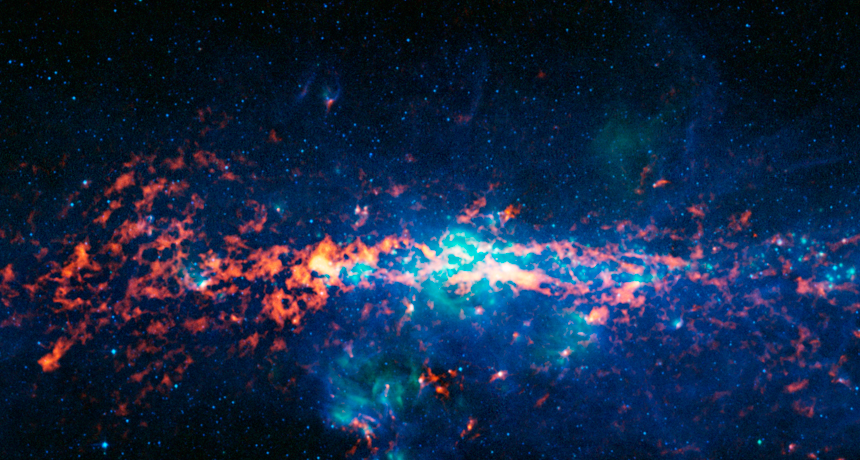Interstellar chemical resembles building blocks of life
Newfound molecule has branched structure akin to amino acids’

MOLECULAR FOG Sagittarius B2, the bright orange-red region left of center in this radio-infrared image, is a cloud of dust and gas around 26,000 light-years from Earth. It may host complex chemicals that are fundamental to life.
ESO/APEX, MSX/IPAC/NASA